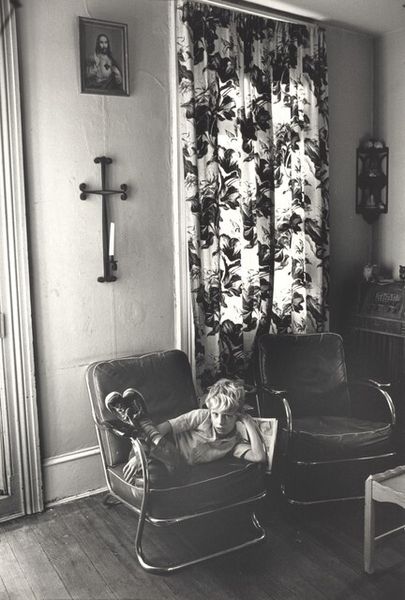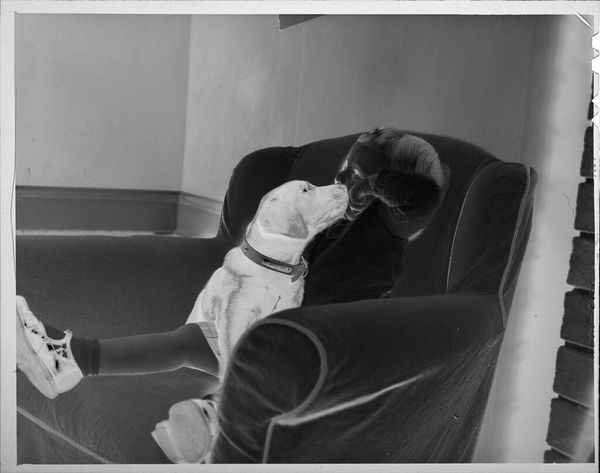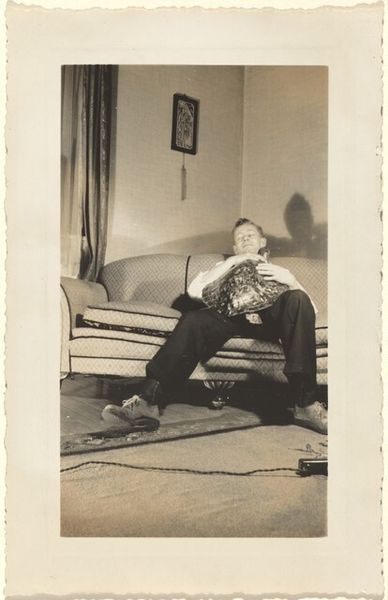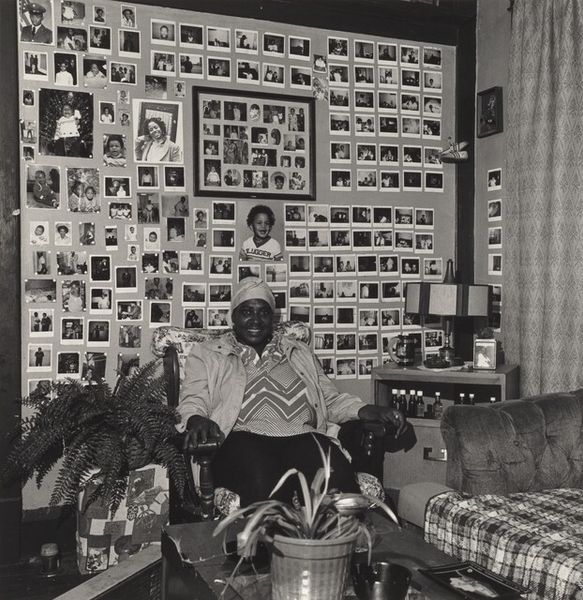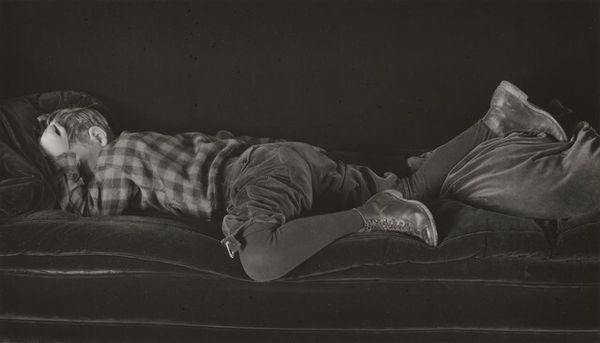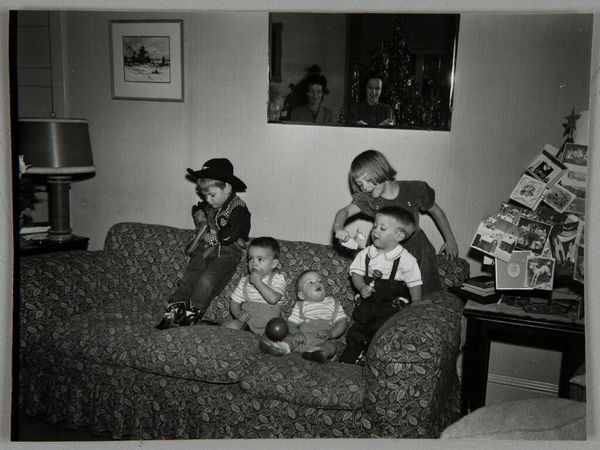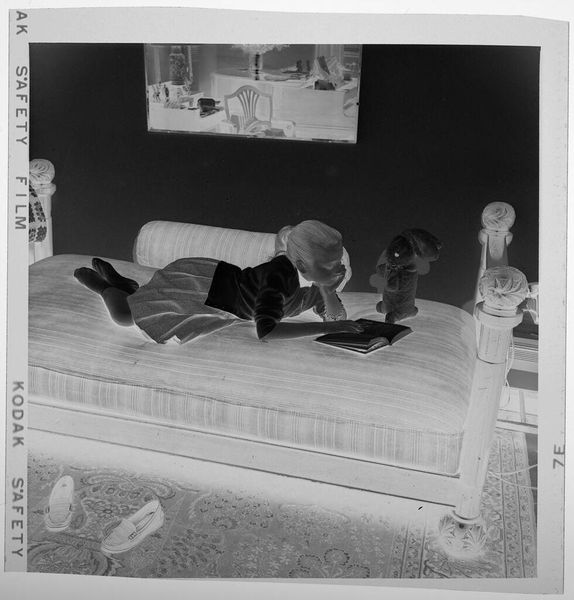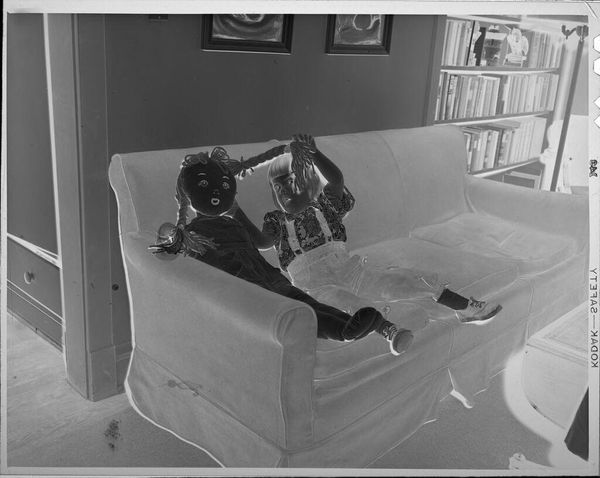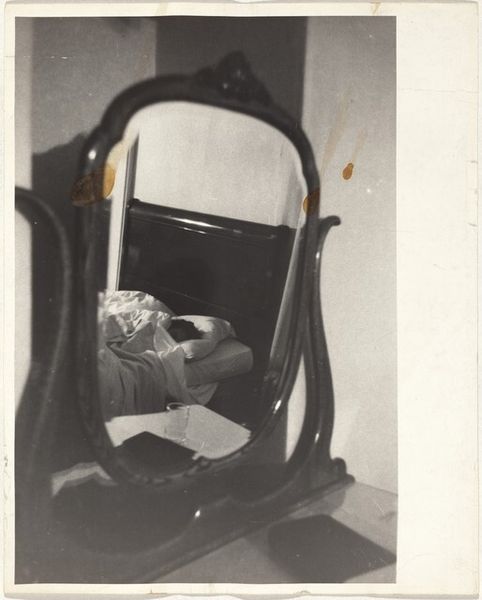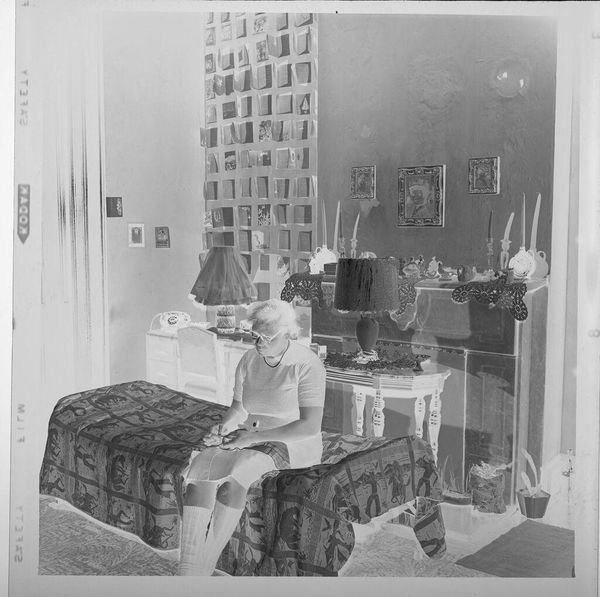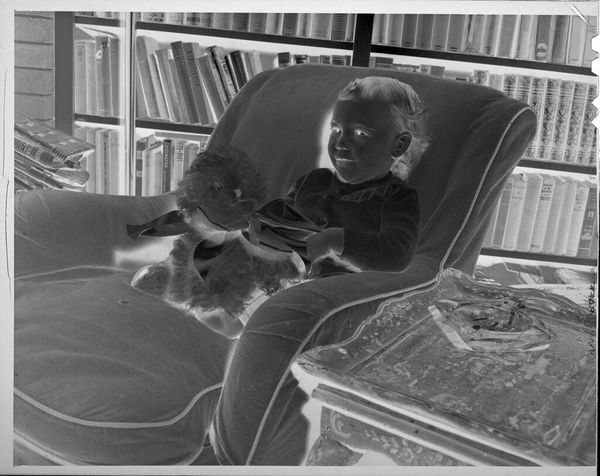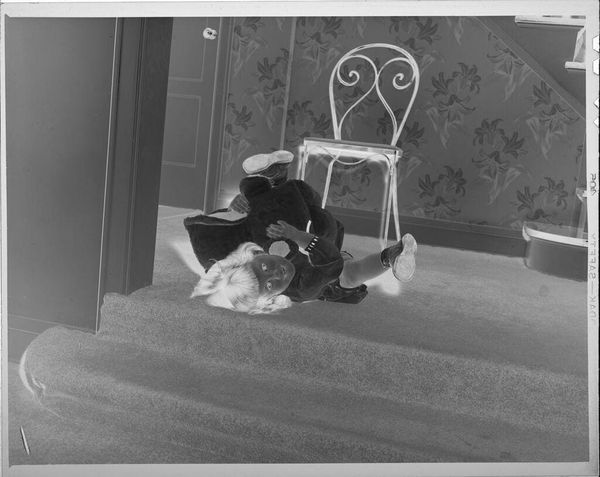
Dimensions: image/sheet: 16.1 × 23.9 cm (6 5/16 × 9 7/16 in.)
Copyright: National Gallery of Art: CC0 1.0
Curator: Esther Bubley's 1950 gelatin-silver print, "Waiting Room Scene," really captures a specific moment in American life. What are your initial impressions? Editor: Stark. The geometry of the suitcases contrasted with the soft curves of the child, creates an odd tension. What strikes me is how the limited grayscale brings all the attention to the lines and textures. Curator: Bubley worked for the Office of War Information and later documented postwar America. This photo is quintessential social realism. It's not just a pretty picture, it’s about capturing the mundane realities. The image speaks to broader themes of travel and perhaps the anxieties of post-war life in America. Editor: Agreed. But note the composition too. The child, the suitcases and the hat act like structural pillars within this horizontal landscape. Bubley guides our eye through a sequence of light and shadow using depth of field, lending a certain symbolic gravity. It's a photograph, yes, but its artistic rendering is significant. Curator: Consider the cultural context as well. Travel at this time wasn't so accessible, meaning perhaps anxieties of social mobility. Even the child's attire suggests this is someone from a particular class, presented with this glossy magazine as an item that promises a potential way to get there. What do you read into the girl's concentration, immersed in that magazine? Editor: You read it culturally, I read it emotionally. Doesn't the image convey isolation through visual economy? The subject—the girl, the bags, the bench, all placed in almost perfect relation within the four-sided format. The magazine is not just context; it is also tonal support that drives attention to her face, and from that she emerges an island of light, suspended within shadows of implied movement, I suppose that's why you see "waiting" while I register only tension. Curator: It's fascinating how this work, ostensibly documentary, becomes so layered under scrutiny. We see our biases reflected, whether it's class anxieties or compositional puzzles. Editor: Ultimately, I leave with my formalist lens trained and ready to reconsider my own subjective experience. Curator: Precisely! And hopefully, our audience does too—prompted by these photographic slices of social history.
Comments
No comments
Be the first to comment and join the conversation on the ultimate creative platform.
